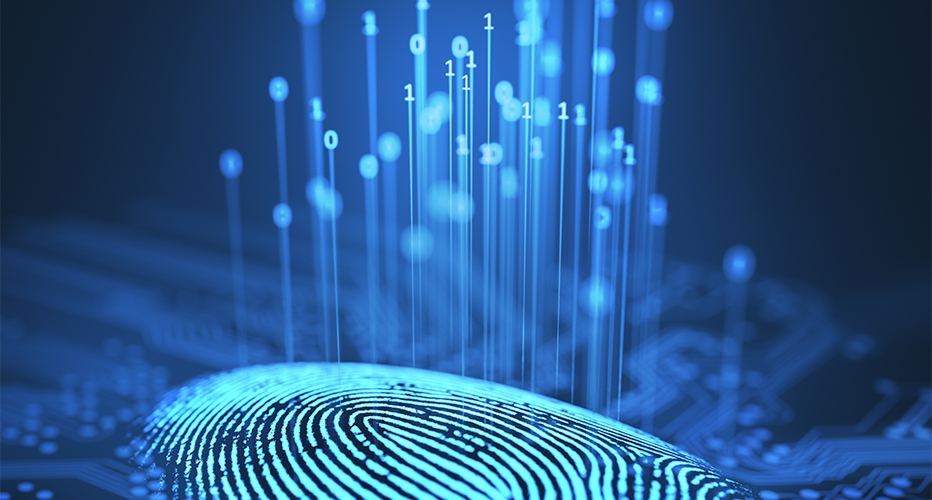BIOMETRICS, THE FUTURE OF LOGIN?
Say hello to Biometrics and unlock the future of login

2022
Today, a great number of apps, even banking services, make it possible to verify your identity by recognizing your face, by voice match or just by placing your finger on the fingerprint reader of your mobile phone. And they are making “logging in” as easy as looking or speaking to a device. In a digital world full of passwords, could Biometrics be the evolution of authentication?
What is “Biometrics”, you might ask. It’s a term to describe body measurements and calculations related to human characteristics. Those distinctive characteristics, that we are so proud of making us unique from one another. Biometrics are often categorized as physiological identifiers, which are related to the shape of the body, with some examples being fingerprint, palm veins, face recognition, DNA, palm print, hand geometry, iris recognition, retina and even odour/scent. And as part of our essence, we should also add the behavioural features that are related to the pattern of behaviour of a person, including but not limited to typing rhythm, gait, signature, behavioural profiling, and our wonderful; voice. Some researchers have coined the term 'behaviometrics' to describe this latter class of biometrics. And no, we should not confuse it with the biometry statistics we were taught in biology courses.
Biometrics, these unrepeatable characteristics, could and are evolving into a simple, secure way of IAM (Identity and Access Management) processes. Consequently, if You Are who you say you are (literally), a system can more reliably verify your identity and grant you access. This authentication method has several advantages. Convenience and simplicity of use are undoubtedly two of them. Whether it’s placing your finger on a device, facing a sensor or simply speaking over the phone, none of these actions involves any great difficulty, as could happen with passwords or codes, which you need to remember or save to your browser. In a Design Thinking approach, this kind of authentication is also building upon inclusion, with respect to ability by a contactless way. And, since human beings are not identical, as science has established, the security of this type of identification is greater. It is also a method that significantly reduces the chances of suffering crimes such as phishing; a fraudulent practice with which cybercriminals seek to access our personal data by sending e-mails.
Lastly, one of the advantages of biometric security is its continuous innovation: as technology and Artificial Intelligence advances, so do authentication methods. For example, one of the most recent steps in this direction is the combination of behavioural biometrics, which takes into account a combination of factors to identify the legitimacy of banking customers’ operations, such as how they type on the keyboard, the locations from which they frequently perform operations or their purchasing habits. Another example for this could be to detect a person’s stress levels (in a case of a forceful incident) and thus deny or temporarily lock access.

While super harder to fake, just as with any authentication method, Biometrics should not be considered as 100% foolproof. However, industry innovation in AI and anti-spoofing have made biometrics viable for even secure applications like payment processing. Nevertheless, it’s important not to rely on a single form of identification. If biometrics are compromised, then the identification method cannot be replaced like a password, because you can’t simply change your face. Biometrics are recommended to function as part of Multi-Factor Authentication or Two-Factor for a stronger security measure and login alternatives. Another thing to consider is that, with biometrics login, there may be times (depending on application and authentication method) that signing in can be a bit slower, compared to other login methods, because the process of scanning and verifying your identity could take some time.
Regarding Privacy and ethical concerns, there are also valid arguments raised around software possibly enabling other forms of human tracking without prior consent or knowledge, but there are ways to mitigate them. Companies and solution providers can protect PII (Personally Identifiable Information) in a private blockchain and encrypt digital identities in secure enclaves, accessible exclusively through advanced biometric verification. Easier workaround: if your application is building biometrics for login purposes, make sure that the company that implements it for you is storing information under robust security measures to protect these data.
As the world becomes more and more digitised, the need for secure login authentication becomes increasingly important. Biometrics is one of the most secure and convenient ways to protect your online information. By combining Biometrics with MFA or 2FA you can add an extra security level to your app and make it faster to access and easier to use. This way, you can prompt biometrics far more frequently than email and password, while preserving the ability to fall back to your own authentication scheme, if necessary or by user preference.
Say hello to Biometrics to unlock the future of login and consider investing!
Want to see a form of biometrics login in action? Check out my recent implementation on Biometrics Facial Recognition on extramilers.eu.
ATCOM: From Digital to Purpose

